This was published 8 years ago
Locarnese National Park, Switzerland: The national park that is more Italian than Swiss
By Andrew Bain
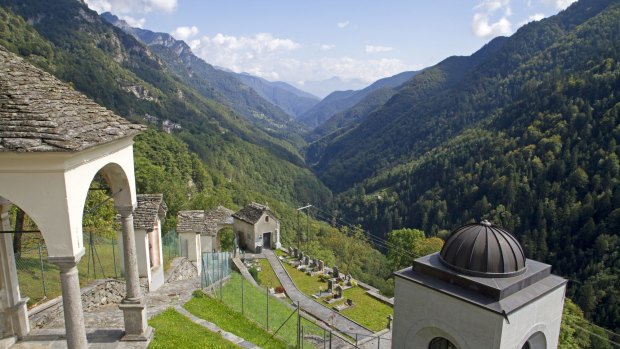
A view of the Onsernone Valley from the village of Comologno.Credit: Andrew Bain
In 1914, four days after the declaration of war in Europe, neutral Switzerland made a very different proclamation of its own, creating the country's first national park. It was the first national park in the Alps, and the first in Europe outside of Sweden.
It was a bold, progressive statement of environmental intent and yet, 100 years on, there remains just the one national park in Switzerland. Almost certainly that is about to change.
In the far south of the country, in the Italian-speaking canton of Ticino, a new and different kind of national park is being conceived. The proposed Locarnese National Park will protect a 220-square-kilometre area of land through the Central Alps west of the city of Locarno, but it's also being created to preserve the traditions and cultural heritage of 13 villages.
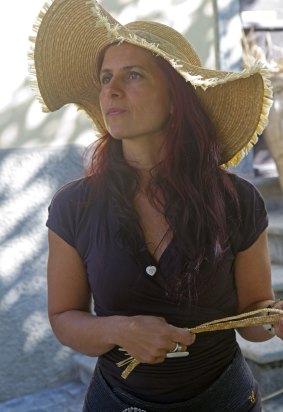
Lara Blumer of Atelier Pagliarte and straw braids for plaiting.Credit: Andrew Bain
Though it's a rare place with more forest cover now than a century ago, the park will be as fascinating for its human life as for its remote mountains and 500 kilometres of walking trails.
The centrepiece of the park, literally and figuratively, will be the Onsernone Valley, which cuts a wedge into the mountains from Locarno west to the Italian border. Five of the 13 villages cling to the slopes of this valley, and much of the impetus for the establishment of the national park came from here.
I've come to the Onsernone Valley from Locarno, driving out through slopes terraced with vines. Fruit trees overhang the road, and clear streams trickle towards Lago Maggiore. All around, the architecture and the accents are more Italian than Swiss, befitting a canton that dangles to within 40 kilometres of Milan. Only the church spires — so very tall and thin — look Swiss.
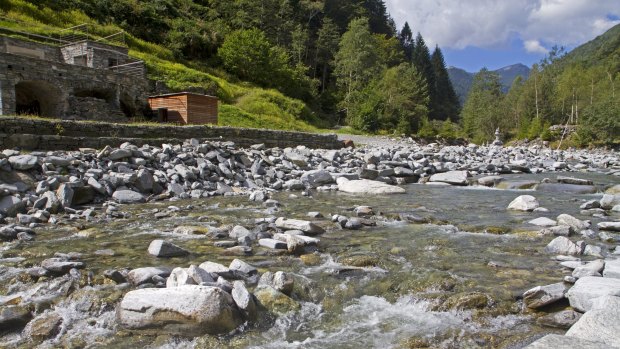
The Bagni di Craveggia, a bathhouse built on a spring on the bank of the Isorno River.Credit: Andrew Bain
The roads from Locarno coil through breaks in the mountains until, after about 30 kilometres, we enter the Onsernone Valley.
A steep and deep valley, the Onsernone is like a step back in time after the lakeside, Riviera-like buzz of Locarno. In the villages, the shadows of historical poverty linger, recalling times when its men were forced to leave the valley each winter in search of work.
Homes are simple constructions, their walls and roofs puzzled together in stone. Summer pastures still dot the high slopes, looking like bald spots in the heavily wooded land, and a nearby valley remains even now without electricity.
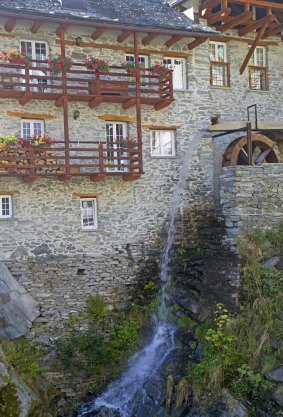
A bona (corn) flour mill in Vergeletto.Credit: Andrew Bain
Large houses are referred to as "immigrant homes", since only men who left the region to work could afford to build anything even slightly palatial. It's difficult at times to remember that I'm still in Switzerland.
The idea of creating a national park here was first raised 15 years ago, but the initiative did not come from government or environmental authorities.The 13 villages proposed the park concept and it's the villages that have owned and managed the project ever since.
This being Switzerland, the park's creation will be a process of democracy. Next year, residents in each of the 13 villages will vote on whether the Locarnese National Park comes into being. Should they vote yes, it will be formally established in 2017. Every 10 years another referendum will be held to determine whether it remains a national park.
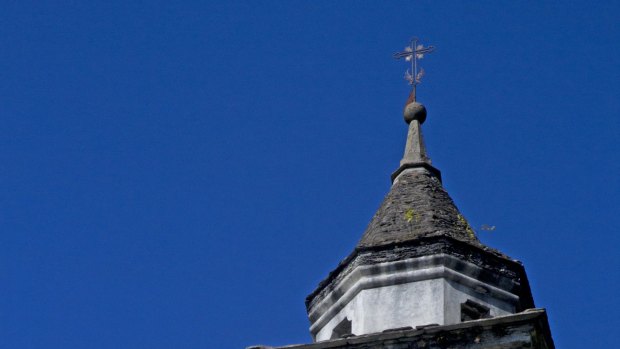
Berzona's distinctive village clock face, with its two sevens and no eight.Credit: Andrew Bain
For the villages, the concept is about protecting not just the land but also some of the region's cultural traditions, such as straw braiding in the village of Berzona. The settlement claims to have more hours of sunshine than any other town in Switzerland, and there's a silence to Berzona, broken only by the occasional vehicle and the clang of bells from a church clock tower with an inexplicable error, two sevens, and no eight, on one of its clock faces.
Plane trees frame what must be one of the smallest town squares in Europe, and the old town hall now houses Atelier Pagliarte, a straw braiding co-operative. This craft was once such a major local industry that in the 17th century a group of men was caught smuggling 10,000 straw hats out of the Onsernone Valley.
In 2005, however, a local teacher realised nobody was working straw any more, prompting a group of women to revive the art. Today, the craft is in the hands of about six women in Berzona, including Lara Blumer, who married and moved to the valley from Spain almost two decades ago.
"We're a small valley struggling for survival, but we exist," Lara says as she plaits straw in the town hall studio-cum-store. "I found my place in life here, but I've only been here 18 years. To the old residents, I'll never be a local."
Traditionally, the industry used rye straw, which grew across vast terracing throughout the valley - in the small village of Loco alone there are 25 kilometres of stone walls supporting terraces. Today, Atelier Pagliarte imports rice straw. Working part-time, the women plait then stitch the straw together on a shoemaker's sewing machine, producing the likes of hats and bags.
Past Berzona, the road through the valley resembles a piece of string laid down across the slopes. About halfway through the valley, a turn-off leads to Vergeletto, a village squeezed into an even narrower side valley, its line of homes clinging to the hillside.
Vergeletto was once a thriving bona (corn) flour producer. In the late 19th century the village had more than 400 residents, with every large family operating a mill. In the middle of the village, five bona mills clustered around a single cascade.
In 1960 the last of the bona mills closed and a local industry was seemingly lost. But in 2010, local resident Ilario Garbani, whose family had operated mills in the village since 1780, re-opened one.
"The people here prefer flour made with corn," he says simply of his motivation.
In the mill, a water wheel turns a pair of grindstones, while up the slope Garbani is transforming two other mills into museum pieces for visitors.
Across the road, in a room below the village grocery store, is the production centre for Garbani's Farina Bona mill ('Farina Bona' translates in the local dialect to 'Flour that Tastes Good'). Here he roasts the corn kernels in an old coffee roaster, producing flour from which he makes the likes of biscotti, grissini, pasta and even a corn beer that's sold across Ticino.
The Onsernone road ends to vehicles at a gate in the village of Spruga, but it continues for walkers. From the gate, it's a short hike to Bagni di Craveggia, a bathhouse built over a spring on the bank of the Isorno River. The temperature of the spring is around 17 degrees, but its waters are considered therapeutic. The bathhouse is partly in ruins, but is in the process of being restored.
The plan is to incorporate the baths into the national park, though they're not in Switzerland. A few metres before the bathhouse, on the opposite bank of the river, I'd stepped over the border into Italy.
I'd changed countries, but I hadn't necessarily left the national park. Proponents for the proposed Locarnese National Park are hoping to make it an international reserve, spilling over the border into the Italian mountains northwest of Milan.
Switzerland's second national park might well also be Italy's 25th national park.
The writer was a guest of Switzerland Tourism.
TRIP NOTES
MORE INFORMATION
www.myswitzerland.com; www.parconazionale.ch.
GETTING THERE
Swiss International Air Lines flies to Zurich from Melbourne and Sydney. You fly to Singapore with British Airways and then to Zurich with Swiss; see www.swiss.com. It's a three-hour train trip from Zurich to Locarno. For rail information, including Swiss Travel Pass details, see www.swissau.mytraintravel.com.
STAYING THERE
Set off the road in the Onsernone village of Comologno, Palazzo Gamboni is a palatial 18th-century 'immigrant home' transformed into an atmospheric five-room hotel. Part of Swiss Historic Hotels, the building is filled with original structures, 18th-century furniture and creaking wooden floors, with three guest rooms in a new wing and two in the original building. See www.swiss-historic-hotels.ch.
FIVE OTHER SWISS PARKS
Switzerland also has a range of nature reserves along with its one national park..
Biosphere Entlebuch
Lucerne's so-called Wild West has been protected as Switzerland's first biosphere reserve. It features the country's largest moorlands, and visitor sights include mud baths and the pilgrimage church of Heiligkreuz.
Swiss National Park
Switzerland's sole national park covers 170 square kilometres of remote mountain country in the country's eastern Graubunden canton. Once a cleared wasteland, it has 80 kilometres of hiking trails, and animals such as ibex, red deer and bearded vultures (all once locally extinct) have returned to the park.
Pfyn-Finges Nature Park
This Valais park extends from valley vineyards to mountain-top glaciers. It includes the Barrhorn, the highest mountain summit (3610 metres) in Switzerland accessible to walkers.
Swiss Alps Jungfrau-Aletsch
A Unesco World Heritage-listed area encompassing some of the most famous mountain names in Switzerland — the Eiger, Jungfrau, Mönch — as well as the longest glacier in the Alps, the 23-kilometre Aletsch Glacier.
Parc Adula
Wrapped around the 3402-metre Rheinwaldhorn (Adula in Italian), this is another reserve proposed as an eventual national park. Parc Adula is famed locally for the stunning Plaun la Greina, a wide alpine plateau saved from a dam proposal in the 1980s.
Sign up for the Traveller Deals newsletter
Get exclusive travel deals delivered straight to your inbox. Sign up now.